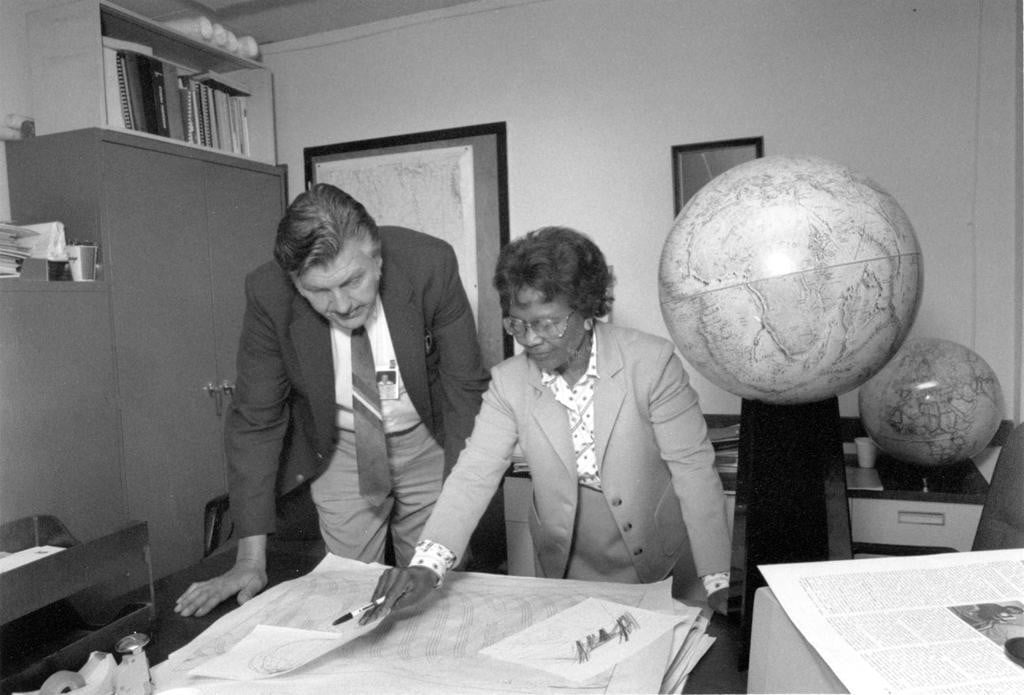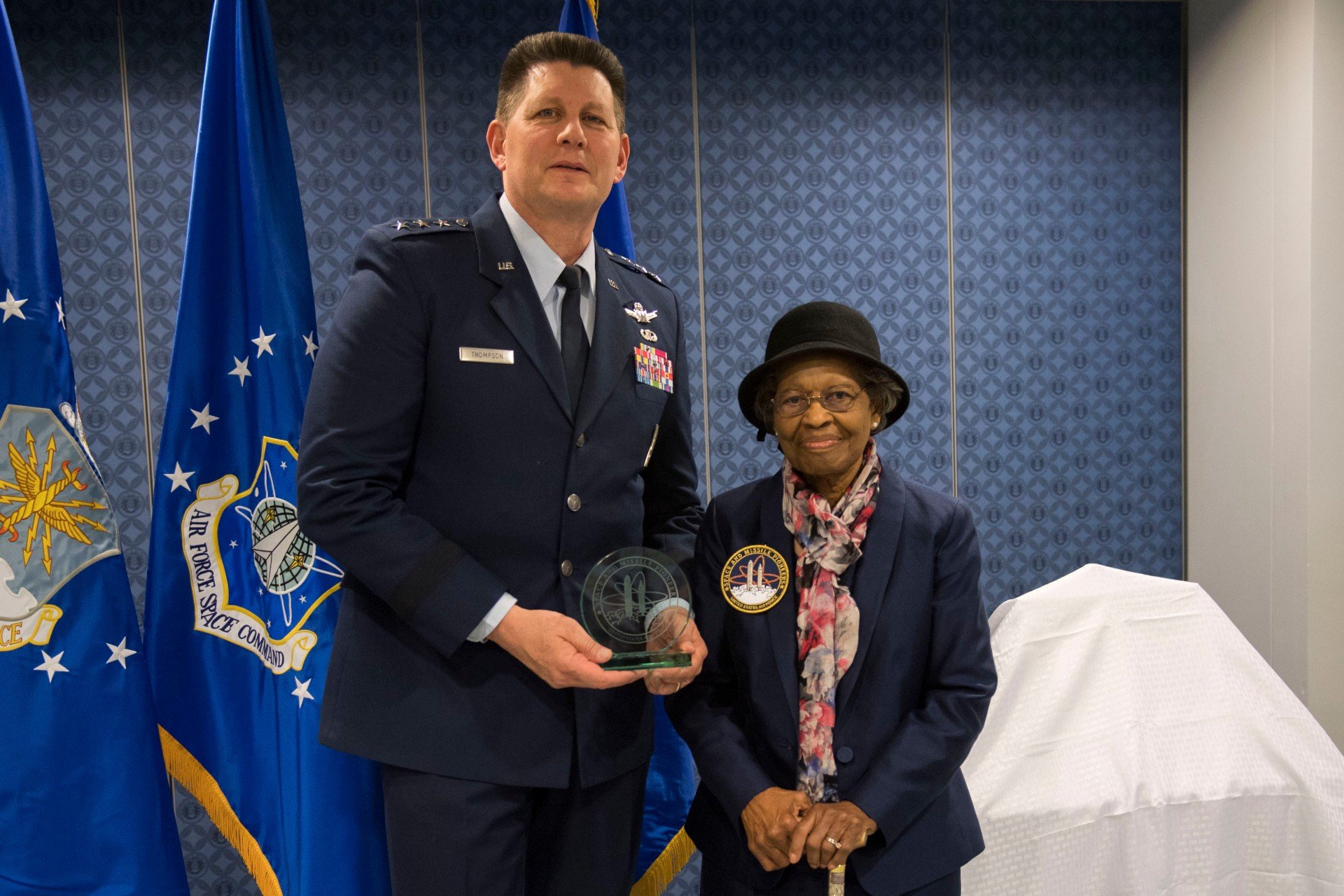Oct. 27, 1930: Birth of Gladys West, the Mathematician Who Laid the Groundwork for GPS
West’s research at a naval facility in Virginia proved crucial to navigation satellite systems.

Gladys West was born in Sutherland, Virginia, in the early days of the Great Depression. Her parents worked hard to make ends meet in the rural town, which afforded its Black residents few job prospects beyond farming and processing tobacco.
But while she chopped wood and fed chickens, West dreamt of more — “more books, more classrooms, more teachers, and more time to dream and imagine what life would be like if only I could fly away from the strenuous and seemingly never-ending work on our family farm,” West says in her memoir It Began with a Dream.
West could not have imagined her eventual path: building a career as a mathematician and contributing to research that underpinned the creation of GPS.
Every day through seventh grade, West and her siblings trekked three miles to their one-room schoolhouse, which was outfitted “with rusty, decrepit furniture, sometimes leaky ceilings, and always hand-me-down books,” she writes. The town’s Black students went there, and they were taught by a single, overworked, underpaid teacher. “The white folks called it separate but equal, but there was nothing equal about it,” she recalls.
In high school, West excelled in math and science. That’s when she glimpsed a path: The top two graduates received college scholarships. West secured her place as valedictorian and became the first in her family, and second from her community, to attend college.
To West, Virginia State College — now Virginia State University, a historically Black college south of Richmond — felt like a different world, exposing her to new experiences, ideas, and career options. After graduating with a bachelor’s degree in math, she became a teacher at a rural, segregated high school. A few years later, she earned a master’s degree in math from Virginia State. She returned to teaching but continued applying for jobs.
Before long, West received a letter from the Naval Proving Ground (now the Naval Support Facility) in Dahlgren, Virginia. She had applied for a position as a mathematician, and they wanted her to interview.
“I wasn’t sure if they were serious, and I couldn’t find it on a map, so I had no idea where Dahlgren was located,” West says in her memoir. Questions flooded her mind: How would I get there? Where would I live? Do they realize I’m Black? She declined the interview, hoping for an opportunity in Richmond or Washington, D.C.
Intent on recruiting West, Ralph Niemann, head of the Warfare Analysis Department at Dahlgren, sent her a job offer anyway. This time, she accepted.
The Dahlgren proving ground, located in a remote area near the Potomac River 50 miles south of Washington, was established in 1918 as a testing site for naval munitions. During World War II, Dahlgren analysts determined trajectories for all the Navy’s guns, unguided rockets, and bombs.
“The computational requirements were staggering,” wrote Raymond Hughey Jr. in an article in the Technical Digest of the Naval Surface Warfare Center, Dahlgren Division. “Trajectories needed to be computed for all usable conditions for each gun-projectile combination to determine the range tables.”
By the time West arrived in 1956, Dahlgren was the Navy’s primary computing center. Its newest acquisition, the Naval Ordnance Research Calculator, was considered the world’s most powerful computer. To take full advantage, Dahlgren hired more scientists, engineers, mathematicians, and programmers. They didn’t only work on trajectories; ideas and research questions were plentiful.

“The problems were already here, and the engineers and mathematicians were looking for ways to solve them faster and cheaper,” Niemann said in an interview published in Kenneth McCollum’s book Dahlgren.
West’s first tasks included programming and coding algorithms to compute weapons systems range tables, a high priority given Cold War tensions between the U.S. and the Soviet Union. She also worked on orbit trajectories for the emerging U.S. satellite program, another Cold War-driven project.
The work was new in another way: While the city of Dahlgren was segregated, the base and its gated amenities, including housing, were not. For the first time, West was working and living in a racially integrated environment. Most of her colleagues were men, and almost all were white.
“When many of my white colleagues saw me in the bathroom, they would get this look on their face like they had seen a ghost or something,” she recalls in her memoir. West was only the fourth Black STEM employee hired by the computing center, and she felt enormous pressure to succeed.
One of her Black colleagues was Ira West, a mathematician. They became friends, eventually marrying and raising three children.
In the 1960s, against the backdrop of the Civil Rights movement, West’s projects shifted from weapons systems to the fundamental nature of orbits, gravity, and Earth’s shape. Much of the work was top secret: The Department of Defense wanted an accurate, stable satellite navigation system, and the Navy was developing key pieces of a framework for the Global Positioning System, or GPS.
“One of my duties was to calculate the geoid, the hypothetical shape of the Earth, coinciding with mean sea level and its imagined extension under, or over land areas,” West wrote. She had the added challenge of working mostly with satellite data collected over water, which required factoring in the tides and other forces.
In addition to the geoid model, her work improved the reference ellipsoid model of Earth and models of satellite orbit trajectories. This work laid the foundation for GPS. “Without these three key elements, using satellites to determine a position on Earth would not be possible,” she wrote. “The better these elements are defined and continually refined, the better the resulting position.”
West spent the next few decades improving these results, completing a master’s in public administration along the way. She led data analysis projects for two NASA satellite missions that further advanced the models, and published several GPS-related papers. Still, West was often passed over for career advancement opportunities that were awarded to white male colleagues.
By the 1990s, when her children were grown and her husband retired, West was ready for more. While still working full-time at Dahlgren, she tackled the coursework and exams for a Ph.D. in public administration and public affairs.

West retired from Dahlgren in 1998 after 42 years. “The highlight,” she said in an email, “was when I was able to understand the software system well enough to determine problems.”
In 2000, after recovering from two strokes, West completed her thesis and graduated with her Ph.D. In her memoir, she calls it “the most amazing accomplishment of my life.”
West’s contributions were largely overlooked until the 2010s, when she gained recognition for her career. In 2018, West was inducted into the U.S. Air Force Space and Missile Pioneers Hall of Fame.
Today, West — now 94 years old — is still thinking about “more.” She’d like to see more fun methods of teaching math, more youth pursuing STEM classes, and more girls and women confident in science. “Keep learning,” she says. “Follow your dream.”